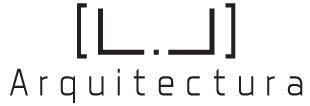- Epoch Shifts: Examining the core of news today and forecasting tomorrow’s world.
- The Shifting Media Landscape
- The Rise of Social Media as a News Source
- The Impact of Algorithmic Filtering
- The Erosion of Trust in Media
- The Challenge of Misinformation and Disinformation
- The Role of Media Literacy
- Forecasting the Future of Information
Epoch Shifts: Examining the core of news today and forecasting tomorrow’s world.
In an era defined by constant connectivity and rapid information dissemination, understanding the core of news today is more crucial than ever. The landscape of information is shifting, moving beyond traditional sources to encompass a multitude of digital platforms and citizen journalism. This evolution presents both opportunities and challenges, impacting how we perceive the world and make informed decisions. The ability to critically analyze information and discern fact from fiction becomes paramount in navigating this complex environment.
The acceleration of news cycles, driven by social media and 24/7 news coverage, creates a sense of urgency and immediacy. While this allows for quick responses to developing events, it also contributes to sensationalism and the spread of misinformation. Therefore, understanding the mechanisms behind information flow and the biases that shape narratives is essential for responsible engagement with current affairs. We must move beyond simply consuming information to actively questioning its sources, verifying its accuracy, and considering diverse perspectives.
The Shifting Media Landscape
The traditional dominance of print and broadcast media is steadily declining, giving way to a more fragmented and digital ecosystem. Online news sources, social media platforms, and independent blogs have become significant players in the distribution of information, catering to a wider range of interests and opinions. This diversification, while offering greater choice, also introduces challenges related to algorithmic filtering, echo chambers, and the erosion of trust in established institutions. The evolving roles of journalists, fact-checkers, and content creators are all contributing to this geospatial analysis of information.
| Traditional Television News | 75 | -5 | 55+ |
| Online News Websites | 150 | 3 | 25-54 |
| Social Media (News Consumption) | 320 | 10 | 18-34 |
| Podcasts (News & Analysis) | 60 | 15 | 25-44 |
The Rise of Social Media as a News Source
Social media platforms have become a primary source of information for a large segment of the population, particularly younger generations. This trend presents a complex set of opportunities and risks. While social media can facilitate rapid dissemination of news and provide access to diverse perspectives, it also amplifies the spread of misinformation, filter bubbles, and echo chambers. The algorithms that govern these platforms often prioritize engagement over accuracy, leading to the promotion of sensationalized or emotionally charged content. Additionally, the lack of editorial oversight and fact-checking mechanisms on many social media platforms raises concerns about the reliability of the information shared.
The concept of ‘citizen journalism’, empowered by social media, has emerged as a significant force in reporting events. This often provides on-the-ground coverage unavailable in traditional media, but this unconfirmed primary source material. However, verifying the credibility of citizen-generated content is crucial, as it is often lacking the rigor of professional journalism. Furthermore, the potential for manipulation and coordinated disinformation campaigns on social media poses a serious threat to the integrity of information ecosystems.
The Impact of Algorithmic Filtering
Algorithmic filtering plays a crucial role in shaping the news that individuals encounter online. These algorithms, employed by search engines and social media platforms, personalize content based on user preferences, browsing history, and social connections. While intended to enhance user experience, algorithmic filtering can inadvertently create ‘filter bubbles’ or ‘echo chambers’, where individuals are primarily exposed to information that confirms their existing beliefs. This can lead to polarization, reduced critical thinking, and an increased susceptibility to misinformation. The opacity of these algorithms and the lack of transparency regarding their inner workings raise concerns about their potential to manipulate public opinion and undermine democratic processes.
Understanding how algorithms filter and prioritize information is essential for navigating the digital landscape. Individuals should actively seek out diverse sources of news and information, challenge their own biases, and critically evaluate the content they encounter online. Furthermore, it is crucial to advocate for greater transparency and accountability in the development and deployment of algorithmic filtering systems.
The Erosion of Trust in Media
The contemporary media landscape is characterized by a declining level of public trust in traditional news organizations. This erosion of trust is fueled by a variety of factors, including perceptions of bias, sensationalism, and the proliferation of ‘fake news’. The rise of partisan media outlets and the increasing polarization of political discourse have further exacerbated this trend, with individuals often gravitating towards news sources that reinforce their existing beliefs. Rebuilding trust in media requires a renewed commitment to journalistic ethics, accuracy, and transparency. However, achieving this in a climate of distrust and misinformation is a significant challenge.
- Accuracy and Fact-Checking: Maintaining rigorous standards of accuracy and fact-checking is paramount.
- Transparency: Being transparent about sources, funding, and editorial processes is crucial.
- Impartiality: Striving for impartiality and fairness in reporting is essential.
- Accountability: Being accountable for errors and providing corrections promptly.
The Challenge of Misinformation and Disinformation
The spread of misinformation and disinformation poses a critical threat to informed decision-making and democratic governance. Misinformation refers to false or inaccurate information, while disinformation involves the deliberate creation and dissemination of false information with malicious intent. The proliferation of ‘fake news’ websites, social media bots, and coordinated disinformation campaigns has made it increasingly difficult to distinguish fact from fiction. Identifying and combating misinformation requires a multi-faceted approach that encompasses media literacy education, fact-checking initiatives, and platform accountability. The ongoing battle between truth and falsehoods is a defining characteristic of today’s information age, with significant implications for the future of civic engagement.
Combating the spread of misinformation requires an understanding of the psychological factors that make people susceptible to believing false information. Cognitive biases, emotional appeals, and confirmation bias all play a role in the acceptance of misinformation. Effective strategies for countering misinformation must address these psychological vulnerabilities and equip individuals with the critical thinking skills necessary to evaluate information objectively. The reality of malicious actors is a persistent force in perpetuating disinformation.
The Role of Media Literacy
Media literacy – the ability to access, analyze, evaluate, and create media – is becoming increasingly essential in navigating the modern information landscape. Media literacy education equips individuals with the skills necessary to critically assess sources of information, identify bias, and discern fact from fiction. This includes understanding how media messages are constructed, how algorithms filter information, and how to evaluate the credibility of online sources. Investing in media literacy education at all levels of society is crucial for fostering informed citizens and strengthening democratic institutions. It empowers individuals to become active and discerning consumers of information rather than passive recipients of misinformation.
- Source Evaluation: Always question the source of information.
- Bias Detection: Identify potential biases in reporting.
- Fact-Checking: Verify information with multiple sources.
- Critical Thinking: Engage in critical thinking and independent analysis.
Forecasting the Future of Information
The future of information is likely to be shaped by a number of emerging trends, including the continued growth of artificial intelligence (AI), the increasing importance of data privacy, and the further fragmentation of the media landscape. AI-powered tools have the potential to automate fact-checking, personalize news delivery, and detect disinformation, but they also raise concerns about algorithmic bias and the potential for manipulation. Protecting data privacy is crucial for preventing the misuse of personal information and ensuring that individuals have control over their online identities. The fragmentation of the media landscape will likely continue, with a proliferation of niche news sources and personalized content streams. The future of information will require adapting to constant change and evolving capabilities.
| Artificial Intelligence | Automated fact-checking, personalized news | Algorithmic bias, manipulation potential |
| Data Privacy | Increased user control over information | Misuse of personal data |
| Decentralized Platforms | Greater control for content creators | Increased spread of misinformation |
Navigating this evolving landscape requires a proactive and adaptive approach. Individuals, news organizations, and policymakers all have a role to play in ensuring a healthy and informed information ecosystem. Promoting media literacy, fostering transparency in algorithmic systems, and supporting independent journalism are essential steps towards building a future where reliable information is accessible to all. The complex challenges posed by the contemporary information environment demand innovative solutions and a sustained commitment to the principles of truth, accuracy, and accountability.

